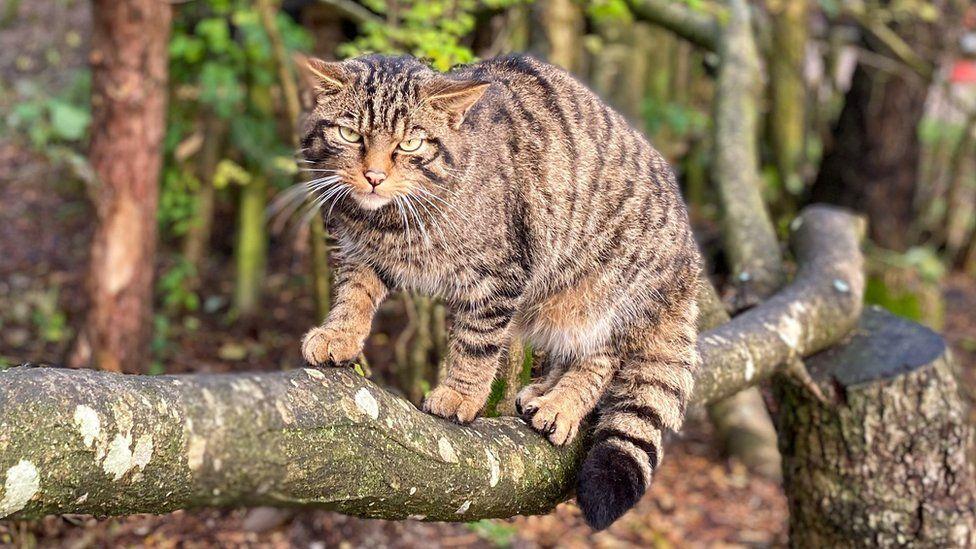BlogTuesday, April 05 2022
The Scottish Wildcat ( Felis silvestris ), also known as the Highland Tiger, is a highly endangered cat in Scotland's Highlands. The wildcats evolved from European wildcats. Over 9000 years ago, the land bridge between Europe’s mainland to England became cut off by the natural development of the waterway of the English Channel. The demise of Scottish wildcats is another tale of habitat loss, hybridization with domestic cats, and persecution by humans. As of 2019, there is no longer a viable wildcat population living in the wild. A recovery project to conserve this elusive cat is underway. Scottish wildcats can be twice the size of domestic felines. Their body is muscular and stockier than domestic cats. The head of the wildcat is flatter, and its ears can rotate independently and tend to stick out to the side; this evolutionary trait allows wildcats to view prey with the camouflage of low rocks and shrubs without their skull or ears giving away their location. While their diet consists mainly of rabbits, wildcats will also dine on birds, amphibians, fish, reptiles, and small mammals, in areas where rabbits are scarce. Wildcats have powerful jaws, and a bite to the neck can crush the windpipe or sever the spine of its prey. Wildcats have even taken down small deer with their tenacity. These fierce wildcats live up to Scotlands Motto - Nemo me impune lacessit - no one provokes me with impunity. If you’d like to learn more about the Highland Tiger, you can find out more in the links below. https://www.wildcathaven.com/scottish-wildcat https://savingwildcats.org.uk/about-saving-wildcats/wildcat-conservation-in-scotland/
Tuesday, April 05 2022
One in three companion pets will go missing in their lifetime. According to the ASPCA, over 6 million companion animals enter an animal shelter every year; however, only 700,000 animals will reunite with their people. We can increase those odds and help our pets find their way home with proper pet identification.
|
 |

